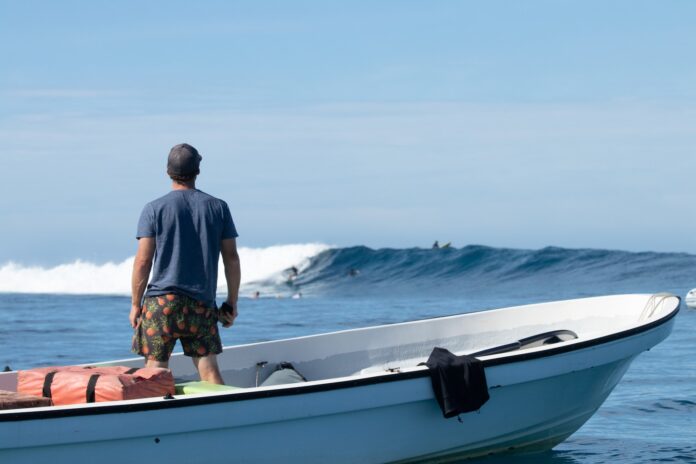As someone who has surfed for almost 40 years, I feel qualified to unpack why surfing is so challenging to master. In short, you never really master it. Just when you think you’ve reached a level of competence that aligns with your aspirations, your body begins to slow down. Recovery takes longer, and flexibility diminishes—unless you’re willing to invest time and effort into cross-training. Yoga, for example, is one of the most beneficial interventions for surfing longevity.
There are many types of surfers, but I think we can all agree that our choice of lifestyle is 80% challenge and 20% stoke. Let me know in the comments if that rings true.
But let’s start at the very beginning: Why is surfing so difficult?
The Constantly Changing Ocean
Unlike snowboarding or skiing on a mountain, where you can practice the same downhill run until you achieve competence, surfing offers no such consistency. Every wave, especially at beach breaks where most beginners start, is different. Conditions are perpetually shifting due to wind, tide, and crowds. These factors make mastering even the basics a test of patience and perseverance. But surfing is better than snowboarding.
Surfing Fitness: Unique and Demanding
Surfing demands a specific blend of cardiovascular strength, endurance, and powerful shoulders. Beyond that, agility and hip flexibility are essential for pivoting the board effectively. Without this specialized fitness, the learning curve can feel insurmountable.

An extended flat spell can unravel your strength and conditioning to the point where you have sore ribs after that first paddle back out.
Surfing is especially hard if you don’t stay fit in other ways when there are no waves to surf. It is worth at least trying to maintain your paddle power.
Dealing with Crowds

The better the surf spot, the more crowded it tends to be. These crowds can be suffocating, sometimes even hostile, transforming what should be a joyful experience into a frustrating one. Early on, it’s crucial to develop social skills to navigate these lineups. Picking the right waves for your ability level is key. Paddling out at a perfect reef break before you’re ready isn’t just unwise—it’s dangerous for you and those around you. This behavior often explains why locals become enraged.
Take Raglan in New Zealand, for example. During a recent session, I saw beginners who couldn’t stand up properly attempting to surf overhead waves. They blocked oncoming surfers and bailed their boards, risking injury to everyone nearby. In one instance, a Japanese surfer girl let her board fly… straight into my head. Moments later, she was trying to high-five another surfer she’d just dropped in on. Frustrating? Absolutely. Funny? Somewhat.
Surfing is amazing for kids but take them to breaks where they can fail without serious consequences.
Choosing the Right Board

Many beginners make the mistake of choosing a board that’s beyond their skill level. In surfing, volume is everything. Resist the temptation to ride a professional-style board. Instead, opt for something with more volume and stability. Start with a long or mid-length soft-top board, then gradually transition to a smaller polyurethane or epoxy board as your skills improve.
The same principle applies as you age. When your body no longer responds the way it once did, increasing your board’s volume and length can extend your surfing years. Few things are sadder than middle-aged surfers flailing in frustration because they can no longer catch waves like they used to. It’s a reminder to savor every moment—you never know which wave will be the last great one of your life.
Waiting for the Right Conditions
Another challenge is timing. Surfing depends on the right conditions, and sometimes they just don’t cooperate. Long flat spells, surf trips with no waves, and holidays where it’s “almost working” are all part of the deal. Surfing, in this way, resembles a romantic relationship: you love it, but it can also drive you crazy. Like raising a child, it offers just enough joy to keep you from abandoning it entirely.
It is worth getting used to surfing small waves. Learning to longboard is optional.
Sun Damage: The Inevitable Cost
Then there’s the sun. If you surf long enough, permanent skin damage is inevitable. Look at older surfers: weathered faces, wrinkles, freckles, and sometimes skin cancers. Yet, despite the wear and tear, you might catch a smile. More often, though, you’ll encounter grumpy expressions—a longing for the “good old days” when lineups were empty, the waves were perfect, and they were young bucks without a care in the world.
A Hard Yet Worthwhile Choice

Surfing is hard. It’s a choice, and if you build a life around it, understand that it won’t be all stoke and fun. Frustration is part of the package. But those unforgettable, almost spiritual moments keep you paddling back out. And they make it worthwhile.





